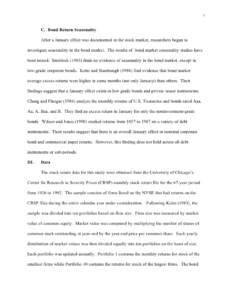Scientific research, encompassing relational methods, aims at determining new innovations and contributing to the existing knowledge of the scientific community. Typically, scientific research method is a combination of conceptual and empirical study. Conceptual study is widely used by researchers to reinterpret the existing or develop a new concept. On the other hand, empirical study involves experimentation to form the basis of new theory. While conceptual study is the preferred research approach in social science & philosophy, empirical study is widely used by researchers in psychology, especially when the evidence states that one variable has influenced some other variable in some manner.
Performing empirical research includes advantages such as:
- Testing new theories using scientific approaches
- Nullification of pesky errors in the study
- Allows researchers to utilise data and drive its conclusion
Similar to performing the study, penning down the empirical research paper is tedious and involves a number of stages.
- Introduction – In this section you should introduce the nature of the research question and the background of your study. State the hypothesis you are aiming to test and the question you are trying to obtain solution. Briefly explain the type of data you are using and state whether you are testing a policy, a model or evaluating a model. End the introduction section by explaining the significance of your results, how they differ from the previous research findings, and implications of your findings. However, if your result inconclusive, briefly state the reason for the same.
- Literature review – This section should not be limited to listing previous studies. It should two subsections. In the first subsection, briefly discuss previous studies that are relevant to the present study. The review should incorporate studies that uses the same approach as yours, employs the same dataset, evaluates the similar model, etc. In the second subsection, explain the importance of your study in detail. Discuss how your research method differs from the previous approaches, are you working on a new data/model, are you answering the research question is broadly or specifically, etc.
- Method or materials – This section discusses informational and basic behavioural assumed while performing the study. The method section is further segregated into subsections such as:
- Participants : Include the number of individuals participated in your study (including the drop-out), how they were selected, their demographic information, their role in your study, etc.
- Apparatus or materials : Here include the equipment or scales used to conduct the experiment. If any unique apparatus was used, explain its features, calibration information, and validity & reliability of the tool.
- Procedure : Explain how the independent variables were manipulated, controlled, and measured. Include the special instructions given to the participants (if any). Also, discuss the steps involved in performing the experiment.
- Data collection & analysis : Briefly describe the statistical techniques and software used to collect and perform data analysis.
- Ethical considerations : Discuss the ethical considerations including the treatment of animals (if any), consent if participants, whether you have taken the approval from IRB, and many more.
- Results – In the result section include data in terms of numerals as well as text. Represent your data using table and figures. However, ensure not to include plenty of tables & figures to avoid confusion among readers. Present evidence that supports your arguments. This might include reliability and validity of your tests. Include the validity and reliability of tests that were used to develop conditions. Ensure not to include any result that is irrelevant to your study. Also incorporate information pertaining to effect size and its significance.
- Discussion – This chapter should map onto the introduction section. Summarise all the results and interpret the findings of your study. Start the discussion chapter with discussing your study. State whether your hypothesis satisfies your research or is rejected. Compare your key findings with that of previous studies and explain why & how your results differ from the previous ones. Also, compare your results with the literature you have referenced. Address the significance, potential implications and limitations of your study. However, avoid overstating the importance of your results.
- References – Include references which are listed in the body of your empirical paper. List the references alphabetically. Incorporate the full name of the journal. However, the name of the author shouldn’t be included and only the initials must be incorporated.
Sample empirical research paper

Empirical study aims to highlight statistical association between variables to develop incidence or prevalence of phenomenon. As you go deep into including valuable points in this paper, remember that the major aim of the paper is to provide details about variable that assists them understand your whole research process.
